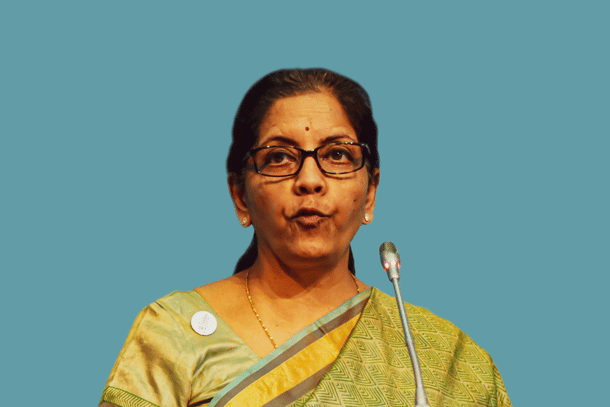Magazine
Don’t Mix Up The Two: Crony Capitalism Needs To Be Eliminated, Competitive Capitalism Encouraged
Karan Bhasin
Aug 08, 2019, 02:52 PM | Updated 02:52 PM IST
Save & read from anywhere!
Bookmark stories for easy access on any device or the Swarajya app.


Crony capitalism has been a feature of the Indian economy at least from late 1970s (if not 1947) and early 1980s when we saw massive concentration of political and economic power.
The command and control structure of our economy with extensive licensing requirements for trade, manufacturing and virtually any form of economic activity made it a perfect setting for corruption and collusion between political leaders and businessmen.
The problem is that the socialist mindset which has been ingrained in the Indian DNA has left us confused and too often the fight against crony capitalism is in fact against capitalism itself. A good example is India’s agricultural policy which is too reluctant to embrace free markets.
The recent shift to direct income support should be a reason enough for the government to get rid of the minimum support price (MSP) regime and while it is at it, perhaps dismantle the Food Corporation of India (FCI) too. Doing so will only benefit the farmers, yet political opposition to such a move (in the name of the interests of farmers) is likely to ensure that it never happens.
The problem in India is of the inability of the state to understand what constitutes capitalism, and this inability has made it look upon ‘private profits’ as a sin. This mindset has continued since 1947 and it has resulted in our inability to tell monopolies from competitive industries.
It is, therefore, important to understand that competitive capitalism promotes competition, which results in economic efficiency while crony capitalism promotes creation of oligopolies that often result in inefficiencies.
Disinvestments And ‘Stigmatised Capitalism’
India’s former chief economic adviser Dr Arvind Subramanian coined the term “stigmatised capitalism” to illustrate the deep mistrust of private capitalism that has been prevalent in India. It is this mistrust which is responsible for excessive presence of government in economic activity through public sector undertakings (PSUs).
In many ways, the decision by India’s first prime minister to restrict the role of private capital in Indian economy (or bringing the era of licensing) was driven by two factors.
First was his firm belief that socialism is the way forward. The second reason is far more important for our current discussion. It was the fear of strong companies monopolising economic activity, colluding with local authorities and exploiting local labour which led to government imposing a regime of licensing.
This fear came from India’s experience with The East India Company and was predominant at the time of India’s independence. Therefore, our tryst with economic policy-making didn’t differentiate between crony capitalism and competitive capitalism.
We now know that because of our fear of private monopolies, we ended up creating public sector monopolies which led to a sluggish growth for the first three decades post-independence.
But our fight against capitalism didn’t end there as in 1969 while Americans were taking a giant leap for mankind (by putting a man on the moon), we were busy with bank nationalisation. The arguments given for this were ensuring priority sector lending, reducing regional imbalances and preventing private monopolies.
Bank nationalisation since 1969 ended up further consolidating economic and political power in the hands of the government which further promoted crony capitalism. We’re all aware of the ‘north-block’ banking culture that existed until 2014 and our banking sector has faced several non-performing assets (NPAs) crises solely because of such consolidation of economic power in the hands of political groups.
Here, it becomes important to understand how monopolies and crony capitalism are related in the context of India, where we restricted private capital from undertaking economic activity without licensing. Under such a set-up, where licences are distributed by the state, it gives the people who make up the state machinery the power to allocate them to their close associates.
Therefore, crony capitalism leads to formulation of monopolies and any law that aims to prevent monopolies has to be a law to address the challenge of cronyism. Instead of promoting free-market and competition, we created an elaborate economic system that prevented competition to government or even some private enterprises thereby allowing them monopoly rents for nearly decades.
Till date, many such PSUs are operational and most of them are alive primarily because of the money of taxpayers. These inefficient firms do not just distort the market but also limit the growth potential of an entire industry. It is a good sign that the government has started to look at disinvestment in some of these.
However, recent disinvestments have yet again indicated how it doesn’t take long for the fight against cronyism to turn into a battle against private capital and competitive capitalism.
For instance, with most recent disinvestments we find that the government relies extensively on the Life Insurance Corporation of India and other such organisations to meet its disinvestment targets.
While this ensures that the disinvestment targets are adequately met, the fact remains that such transactions merely transfer ownership from the government to a PSU which is yet again owned by the government. We have also seen exchange traded funds (ETFs) of central public sector undertakings (CPSUs) which have helped the government dilute its ownership.
Such transactions can help the government meet its fiscal targets, but they will certainly not meet the larger objective behind disinvestments — to leave greater economic space for the private sector. The biggest drawback behind such deals is that they fail to ensure a change in the management of such organisations and the lack of this leads to a ‘business-as-normal’ approach to persist.
Let us take the example of the telecom sector where we at present have Bharat Sanchar Nigam Limited (BSNL) and Mahanagar Telephone Nigam Limited (MTNL). In 2000, we had 3.58 million mobile phone subscribers while in 2017 we had 1.16 billion mobile phone subscribers. During this period, we have simultaneously witnessed a remarkable reduction in the charges of mobile phone usage, and it was not because of government but because of private capital.
Despite an increase in per capita income levels from 2000, our telecom success is largely because of the telecom reforms that were ushered in by the Atal Bihari Vajpayee government that opened up the space for private companies. So, why did BSNL and MTNL fail to make the most of this boom in the telecom sector? The answer is in its management which neither had incentive as such nor any motivation that could help these firms innovate or compete with private sector enterprises.
Transfer of sale from one PSU to another may fill up the government coffers on a temporary basis but they don’t resolve the management problem. At some point, we will invariably end up bailing these firms out yet again using the tax-payers’ money.
In the history of India there was one government that did away with this mindset of staying away from the private sector. The Vajpayee government managed to undertake disinvestment despite baseless allegations of corruption against the minister.
Some of the successful companies that witnessed strategic disinvestment were Hindustan Zinc, Balco, select ITDC hotels and Modern Food Industries. As a matter of fact, though the government completely exited Maruti in 2006, the process was initiated during the National Democratic Alliance (NDA) era.
The problem is not merely in terms of execution of disinvestment, but it is also a political and cultural issue. It is to do with the stigma associated with ‘selling’ public assets to private companies and the allegations of corruption and crony capitalism that inevitably follow.
The current government has taken some steps in the direction of disinvestment however, as it has reiterated its commitment towards sale of Air India and other CPSUs. Perhaps, such disinvestment should come with private players purchasing these assets rather than retail investors or other PSUs as only then can we witness a management overhaul that will enhance efficiency and make them competitive.
There’s another issue that hasn’t received adequate attention lately and this has to do with the value question while allocating natural resources. This is important in the context of recent corruption scandals such as the 2G spectrum scam and ‘coalgate’.
In the case of both, we saw the apex court quashing the allocations of spectrum and mines respectively. While those allocations were an outcome of alleged corruption and collusion between the respective minister and private players, we have to ask if penalising the industry, and hence the economy — including consumers, was the most appropriate decision.
It is interesting to note that while the industry was penalised, those responsible are yet to be held accountable and in this instance, private capital was punished for colluding with political leaders while the leaders themselves are yet to be brought to book.
It is important to understand that cronyism originates from the state which favours a particular economic interest group. Therefore, to fight cronyism we must fight those responsible within the state for giving preferential treatment first and then get to the beneficiaries of the preferential treatment by imposing penalties or recovering economic rents illegitimately accumulated.
Another related issue is of future allocation of resources and the process of auctions. Indeed, auctions are the best mechanism for the state to maximise revenue from the sale of national assets. But, will revenue maximisation always be the key while allocating national resources?
For instance, in the event of enabling the growth of a sector would flat pricing be acceptable despite it yielding lower revenue to the government. Doing so will enable adequate profits for private capital which will benefit the growth of a sector. In certain instances, auction pricing can result in what is known as the ‘winners’ curve’ where those who win the auction have little surplus left post their victory.
At present, we do have a reverse bid auction for coal blocks that go to electricity sector. This ensures that we can provide cheap electricity across the country and this suggests that there is some consideration regarding the design of auctions to ensure the outcome aligns with our broad development objectives. But we must further discuss auctions and their implications for creating a competitive capitalist economy in detail.
In general, we have extended our fight from crony capitalism to pure capitalism, and the anti-capitalist way of thinking has gained over our minds. Even the politically ‘right’ in India are more towards the ‘centre-left’ and a major reason behind this is the prolonged exposure of our administrative set-up towards a socialist way of life.
The fight against crony capitalism cannot be won by considering ‘profits’ as a bad word. Legitimate profits are required for a private enterprise to thrive and therefore, the fight is against monopolies — including state monopolies (excluding strategic sectors) that breed inefficiency and are often an outcome of cronyism.
The Prime Minister and the Finance Minister have both highlighted the contribution of industrialists towards building a modern India. This recognition is a welcome start as most of the previous governments were often colluding with private businesses to generate private profits at public costs while they publicly condemned them for all our problems.
In contrast, the current government has tried to make a departure and shift towards a rule-based regime that promotes competition which is the prime essence of capitalism. However, we are a long way from the optimal.
There’s a need to move away from the culture of ‘stigmatised capitalism’ towards a culture of competitive capitalism. The first step in that direction would be disinvesting in the private sector — and the second would be to rationalise our taxation policy. Only when we achieve both will we be a step closer towards competitive capitalism — which is the only one that works.




